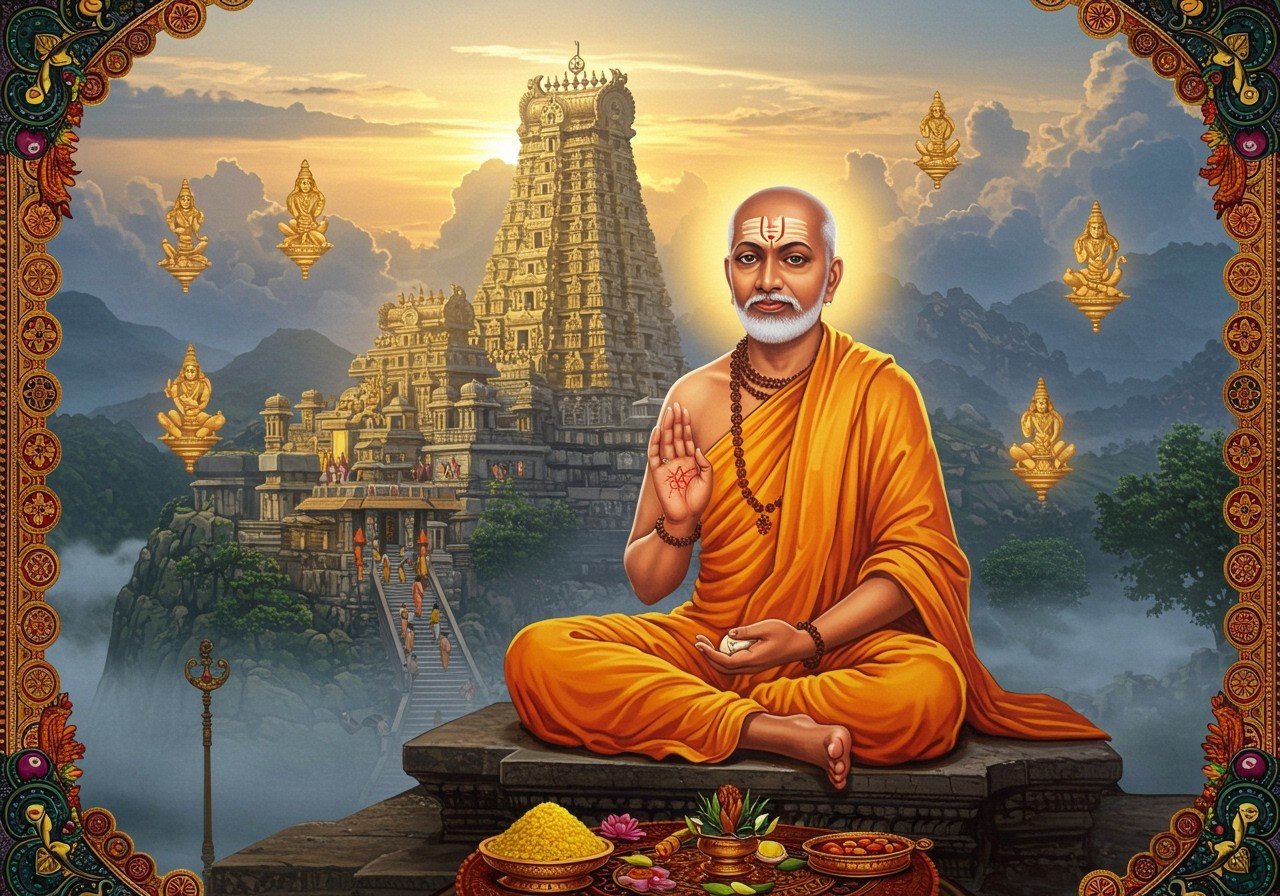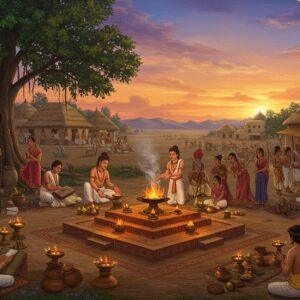Ramanuja’s Enduring Legacy in Tirupati

Saint Ramanuja, a revered theologian and philosopher, has left an indelible mark on the spiritual fabric of Tirupati. Known for his profound teachings and reforms between the 11th and 12th centuries, Ramanuja enriched the religious experience in this holy city. Tirupati stands as a beacon for millions of devotees, thanks to the inclusive spiritual landscape shaped by Ramanuja’s legacy.
Ramanuja and the History of Tirupati
Ramanuja’s Visits and Contributions
Ramanuja’s connection with Tirupati is truly remarkable. He visited this sacred place three times during the 11th and 12th centuries. His first visit focused on studying the deeper meanings of the Ramayana with his uncle, Tirumalai Nambi. His second visit was crucial in resolving a dispute between Saivites and Vaishnavites about the nature of the deity in the Tirumala temple. Finally, at the age of 102, Ramanuja installed the image of Govindaraja, effectively laying the foundation for the Tirupati town we know today. This last act solidified his legacy and cemented his place in Tirupati’s history.
Beyond his visits, Ramanuja’s influence on the temple’s rituals is profound. He streamlined the rituals at the Tirumala temple in accordance with the Vaikhanasa Agama tradition, creating a more organized and inclusive system of worship. Additionally, he introduced the recitation of Naalayira Divya Prabandham, enriching the spiritual atmosphere of the temple.
In 1119 AD, Ramanuja established the Tirupati Jeeyar Mutt to oversee and ensure the proper execution of temple rituals. This institution stands as a testament to his dedication to preserving religious practices. To this day, the Mutt continues to uphold the rituals Ramanuja ordained, safeguarding the sanctity of the temple.
Ramanuja is honored as an “Acharya” (guru or teacher) to Lord Venkateswara himself. A shrine (sannidhi) dedicated to Ramanuja, built by Sri Ananthalwan, exists within the temple. Tradition holds that Ramanuja established that the image of Sri Venkateswara in Tirumala represents Lord Narayana. This further highlights his lasting impact on the religious understanding of the deity.
History of the Tirupati Temple
The history of the Tirupati temple is rich and extensive, with archaeological evidence suggesting its existence as far back as the 3rd century BCE. The temple is dedicated to Lord Venkateswara, an incarnation of Vishnu, believed to have appeared on earth to save humanity during the Kali Yuga. This makes it a place of immense significance for devotees.
Construction of the Tirupati Balaji temple commenced in 300 AD. Over centuries, various dynasties, including the Pallavas, Cholas, and Vijayanagara empires, contributed to its development. The Vijayanagara Empire was particularly instrumental in shaping the temple’s current wealth and grandeur.
The administration of the temple has also seen transitions over time. In 1843, the East India Company transferred its administration to the Mahants of Hathiramji Muth. The Tirumala Tirupati Devasthanams (TTD) was formed in 1933, further formalizing the temple’s management. By 1966, the temple came under the direct control of the Andhra Pradesh State Endowments Department, marking another significant shift in its administration.
Essential Puja Items for Honoring Sri Ramanuja’s Legacy
At Poojn.in, we offer authentic puja items that help devotees connect with Sri Ramanuja’s teachings and the Tirupati tradition. Our Radha Krishna Bigraha are especially relevant given the historical context. These beautiful idols can enrich your home shrine and deepen your connection to the divine.
Also, consider our Marble Dust Shiva Lingam for worship, which can enhance the sacredness of your puja space. We offer a variety of traditional brass lamps, pure cotton wicks, authentic kumkum and chandanam, and specially crafted puja thalis, all carefully chosen to elevate your worship experience.
Visit Poojn.in or contact our customer service team for assistance in selecting the perfect puja items that resonate with Sri Ramanuja’s teachings and the Tirupati tradition.
Conclusion
Saint Ramanuja’s legacy in Tirupati is a treasure that continues to inspire. His visits were pivotal moments that shaped the region’s spiritual character. By resolving theological debates, organizing temple rituals, and establishing key institutions, he laid the groundwork for Tirupati’s current status. His impact resonates not only in the rituals but also in the hearts of the devotees. His teachings and contributions keep the flame of devotion burning bright within the Tirupati temple, reminding us of the enduring power of faith and the significance of cultural preservation. As we navigate the sacred halls of Tirupati, we can feel the presence of Ramanuja in every prayer and every tradition he so thoughtfully established.


